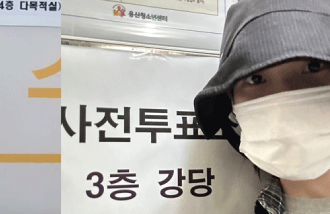Expanding medical school enrollment quotas requires thorough deliberation
Expanding medical school enrollment quotas requires thorough deliberation
Posted October. 18, 2023 07:56,
Updated October. 18, 2023 07:56
In a recent pre-announcement of its intention to expand the annual enrollment quota for medical schools, the South Korean government said it would not reveal the specific size of this expansion. Analysts speculate that the increase could reach 1,000, a significant departure from the initial plan of 300 to 500. However, as the impending announcement draws near, a divide in opinion emerges between experts and the government, with the latter calling for further discussion. This approach appears incongruent with the gravity of the issue, considering the stagnant in medical school enrollment quotas for the past 17 years.
Anyone who has visited a hospital can readily emphasize the need for more doctors without delving into statistical figures. Nevertheless, determining the appropriate size of this expansion falls within the domain of experts. This decision hinges on predicting future demands for medical services amidst a shifting population characterized by declining birth rates and a growing aging demographic. It also necessitates forecasting the annual increase in the quota while considering the existing demand for medical services and the capacity of medical education infrastructure. Furthermore, this decision must be accompanied by measures to address staffing shortages in critical care units and local municipalities. To facilitate this process, the Ministry of Health and Welfare has formed a consultative group comprising representatives from the medical profession and the government and a doctor staff committee to discuss strategies for increasing the number of new doctors.
However, the sudden introduction of the figure “1,000” lacks a substantiated basis, apart from the looming doctor shortages by 2035 due to an aging population. The government’s proposal was met with immediate and vehement opposition from doctors’ groups, decrying the unilateral approach. Additionally, 40 medical schools across the nation expressed concerns that a sudden increase in the enrollment quota could compromise the quality of education, with potentially adverse consequences for patients. The natural sciences and engineering sector is also apprehensive that an increased focus on medical schools may overshadow other fields of science and technology education.
The expansion of enrollment quotas for medical schools is a complex issue due to the influential interest group comprising doctors, and its ramifications for education and people’s lives are substantial. This significance was the driving force behind creating a presidential advisory body during the former Kim Dae-jung administration, which engaged in six months of debates regarding the reduction of medical school enrollment quotas. Expanding the enrollment quota presents an even greater challenge, and any policy change must be supported by thorough deliberation. The decision should await the conclusion reached by the ongoing collaborative discussion group, which should also involve doctors’ groups to develop a sensible plan for increasing medical school enrollment quotas, efficiently allocating medical resources, and establishing an appropriate reward structure.





![“국힘 41% 득표가 졌잘싸? 되레 독 될수도”[정치를 부탁해]](https://dimg.donga.com/c/138/175/90/1/wps/NEWS/IMAGE/2025/06/04/131745994.1.jpg)
![[속보]경찰, 리박스쿨 대표 출국금지…사무실 압수수색](https://dimg.donga.com/c/138/175/90/1/wps/NEWS/IMAGE/2025/06/04/131748397.1.jpg)
